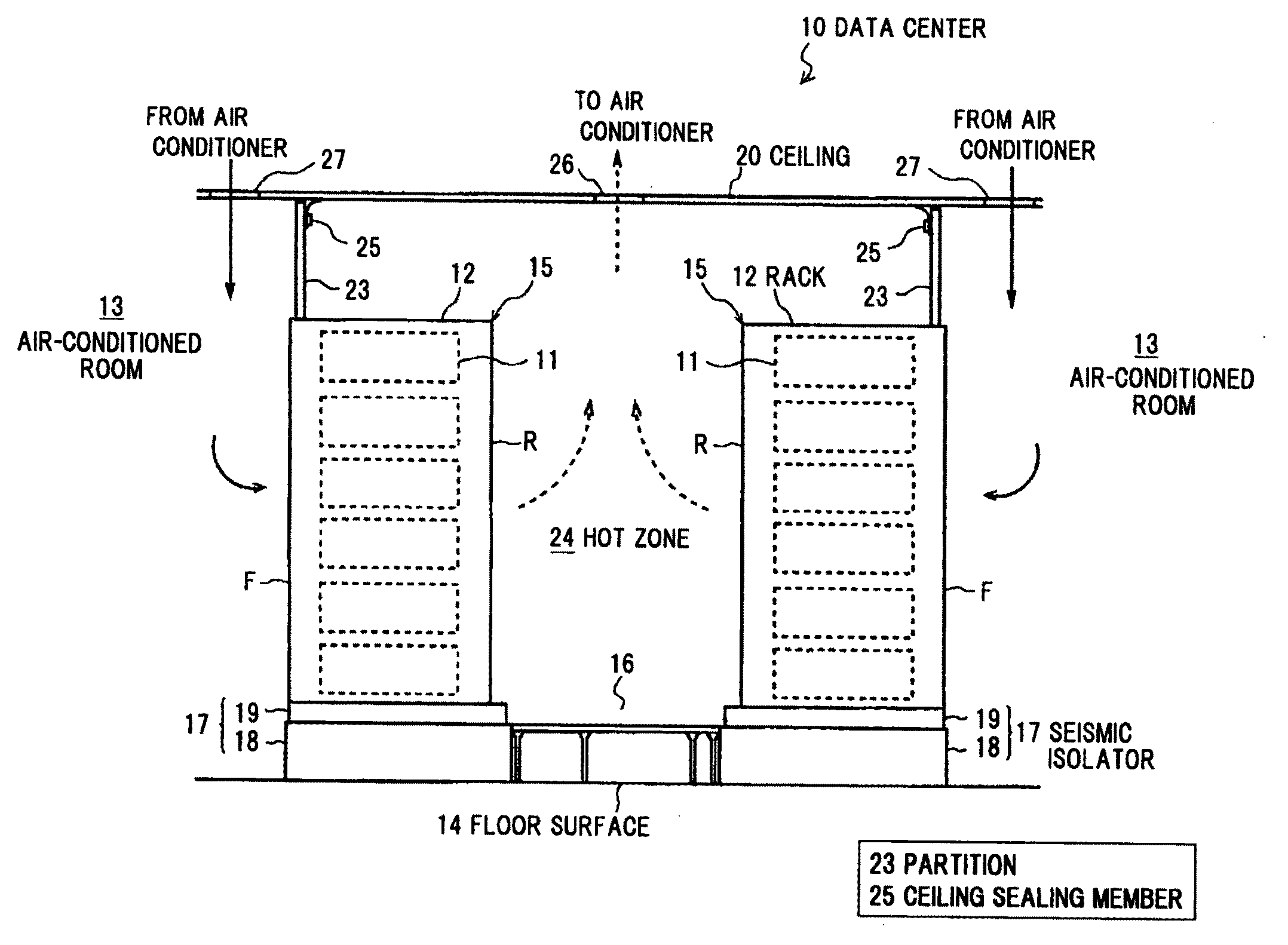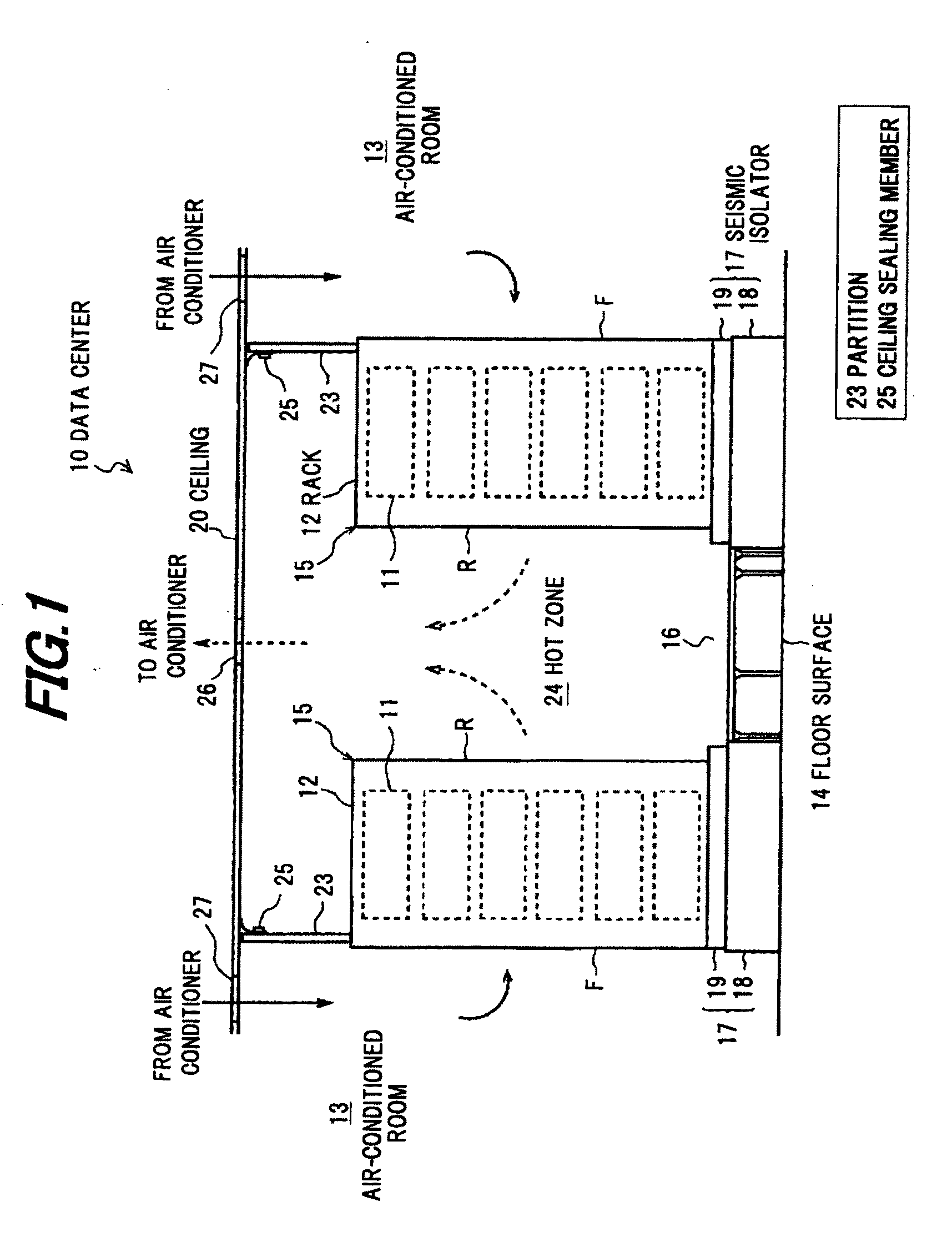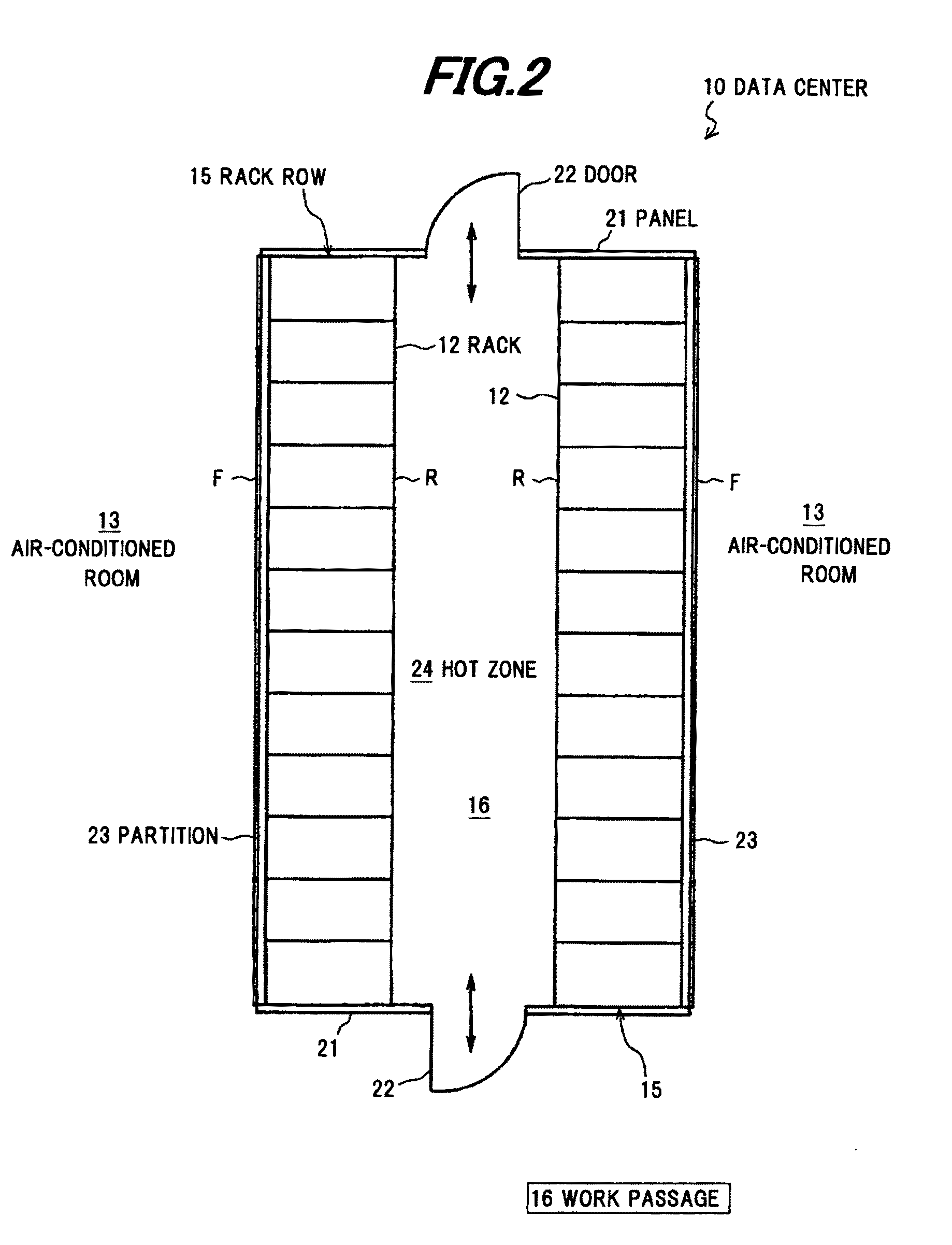Data center
a data center and data technology, applied in the field of data centers, can solve the problems of energy consumption in the air conditioner (the indoor air conditioner) waste, displacement difference between the main coolant pipe and the cooling device, coolant supply and return pipe, etc., and achieve the effect of efficient operation
- Summary
- Abstract
- Description
- Claims
- Application Information
AI Technical Summary
Benefits of technology
Problems solved by technology
Method used
Image
Examples
embodiments
[0039]Preferred embodiments according to the invention will be explained as below in conjunction with appended drawings.
[0040]FIG. 1 is a schematic cross sectional view showing a data center in the preferred embodiment, FIG. 2 is a plan view thereof, FIG. 3 is a side view thereof, and FIG. 4 is a front view thereof.
[0041]As shown in FIGS. 1 to 4, a data center 10 includes at least a box-shaped air-conditioned room 13 composed of a ceiling, a floor surface and four side walls, a rack row 15 formed by horizontally aligning plural racks 12 housing electronic devices 11 such as a sever, etc., in multi-tiers, and an air conditioner (not shown) for conditioning air inside the air-conditioned room 13 in order to eliminate heat generated from the electronic device 11 which is housed in the rack 12.
[0042]The electronic devices 11, which are equipments for information and communication technology such as a server, a CPU, a network equipment or a storage device, are housed in the racks 12 in m...
PUM
 Login to View More
Login to View More Abstract
Description
Claims
Application Information
 Login to View More
Login to View More - R&D
- Intellectual Property
- Life Sciences
- Materials
- Tech Scout
- Unparalleled Data Quality
- Higher Quality Content
- 60% Fewer Hallucinations
Browse by: Latest US Patents, China's latest patents, Technical Efficacy Thesaurus, Application Domain, Technology Topic, Popular Technical Reports.
© 2025 PatSnap. All rights reserved.Legal|Privacy policy|Modern Slavery Act Transparency Statement|Sitemap|About US| Contact US: help@patsnap.com



